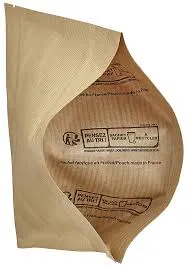- Afrikaans
- Albanian
- Amharic
- Arabic
- Armenian
- Azerbaijani
- Basque
- Belarusian
- Bengali
- Bosnian
- Bulgarian
- Catalan
- Cebuano
- chinese_simplified
- chinese_traditional
- Corsican
- Croatian
- Czech
- Danish
- Dutch
- English
- Esperanto
- Estonian
- Finnish
- French
- Frisian
- Galician
- Georgian
- German
- Greek
- Gujarati
- haitian_creole
- hausa
- hawaiian
- Hebrew
- Hindi
- Miao
- Hungarian
- Icelandic
- igbo
- Indonesian
- irish
- Italian
- Japanese
- Javanese
- Kannada
- kazakh
- Khmer
- Rwandese
- Korean
- Kurdish
- Kyrgyz
- Lao
- Latin
- Latvian
- Lithuanian
- Luxembourgish
- Macedonian
- Malgashi
- Malay
- Malayalam
- Maltese
- Maori
- Marathi
- Mongolian
- Myanmar
- Nepali
- Norwegian
- Norwegian
- Occitan
- Pashto
- Persian
- Polish
- Portuguese
- Punjabi
- Romanian
- Russian
- Samoan
- scottish-gaelic
- Serbian
- Sesotho
- Shona
- Sindhi
- Sinhala
- Slovak
- Slovenian
- Somali
- Spanish
- Sundanese
- Swahili
- Swedish
- Tagalog
- Tajik
- Tamil
- Tatar
- Telugu
- Thai
- Turkish
- Turkmen
- Ukrainian
- Urdu
- Uighur
- Uzbek
- Vietnamese
- Welsh
- Bantu
- Yiddish
- Yoruba
- Zulu
shipping container moisture control
Shipping Container Moisture Control Ensuring Safe and Secure Transport
When transporting goods across vast distances, maintaining the integrity of the cargo is crucial. One of the primary threats to cargo during transit is moisture, which can lead to spoilage, mold growth, and other detrimental effects. Effective moisture control within shipping containers is essential for the safety and security of goods, especially for perishable items like food, pharmaceuticals, and textiles.
Understanding Moisture Sources
Moisture can enter shipping containers through various sources. Climatological factors, such as high humidity and temperature fluctuations, can contribute to condensation within the container. Additionally, the cargo itself can release moisture—this is particularly common with goods like fruits, vegetables, and certain chemicals. When containers are loaded, the heat generated from the cargo can cause the warm air to rise and come into contact with the cooler steel walls of the container, leading to condensation.
Consequences of High Moisture Levels
The presence of excess moisture in shipping containers can have severe consequences. For agricultural products, even slight dampness can lead to mold and spoilage, resulting in financial losses and wasted resources. Similarly, textiles and clothing can absorb moisture, leading to musty odors and potentially damaging the fabrics. In the case of pharmaceuticals, moisture can impact the efficacy and stability of products, posing risks to health and safety.
Preventative Measures
To mitigate moisture issues, several strategies can be employed. One of the most effective solutions is the use of desiccants—substances that absorb moisture from the air. These can be placed inside the container during loading, ensuring that the humidity levels remain within acceptable limits. Silica gel packs and clay-based desiccants are popular options due to their effectiveness and low cost.
Another approach is to use moisture-resistant packaging materials. Innovative packaging solutions, such as vacuum sealing, can significantly reduce the amount of moisture exposure during shipping. Additionally, utilizing breathable materials that allow for air circulation while still protecting the cargo from external moisture can also be beneficial.
shipping container moisture control

Container Ventilation
Proper container ventilation plays a crucial role in moisture control. Shipping containers equipped with ventilation panels can help balance humidity levels by allowing air exchange between the inside of the container and the outside environment. This ventilation can reduce the risk of condensation forming on the walls of the container, thus preserving the cargo's quality.
Temperature Control
Temperature and moisture levels are closely linked. Implementing temperature monitoring systems within containers can help ensure that the cargo is kept at appropriate levels, reducing the risk of moisture accumulation. Refrigerated containers, or reefers, can be particularly effective for perishable goods, as they not only control temperature but can also manage humidity levels.
Training and Best Practices
Training staff involved in loading and unloading cargo on moisture control techniques is essential. Proper loading methods, like ensuring that cargo is adequately ventilated and not overloaded, can help reduce moisture-related issues. Additionally, regularly inspecting containers for signs of moisture before loading can prevent problems from arising later in the transit process.
Conclusion
Moisture control in shipping containers is critical for ensuring the safe transport of goods. By understanding the sources of moisture and implementing effective preventative measures, businesses can protect their cargo from damage and maintain the quality of their products. With advanced technology and careful planning, moisture-related losses can be minimized, ensuring a successful and secure shipping process.













